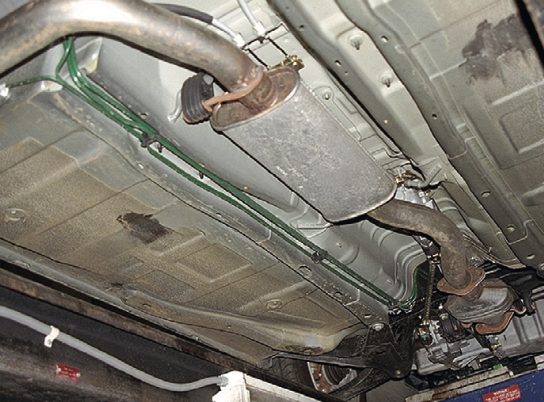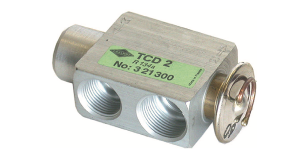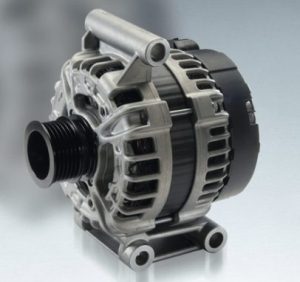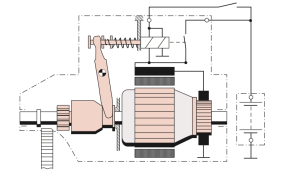An exhaust system is an integral part of any combustion engine, responsible for removing waste gases from the engine and directing them outside the vehicle. The system is composed of various components that work together to ensure that the gases are removed efficiently and safely. In this blog, we will take a closer look at the exhaust system, its components, and how it works.
Components of an Exhaust System
The exhaust system is composed of several components, each playing a vital role in the system’s overall function. These components include:
- Exhaust manifold: The exhaust manifold is the first component of the exhaust system. It is attached to the engine’s cylinder head and collects the gases from each cylinder and directs them into a single pipe.
- Catalytic converter: The catalytic converter is responsible for reducing harmful emissions by converting them into less harmful compounds. It contains a ceramic honeycomb structure coated with various metals that catalyze the conversion of the gases.
- Exhaust pipe: The exhaust pipe is the component that carries the gases from the manifold to the muffler. It is usually made of stainless steel, and its diameter and length are carefully selected to ensure maximum exhaust flow and minimal noise.
- Muffler: The muffler is responsible for reducing the noise produced by the engine. It contains several chambers and baffles that absorb sound waves and convert them into heat.
- Exhaust tip: The exhaust tip is the visible part of the exhaust system, usually located at the rear of the vehicle. It is usually made of chrome or stainless steel and adds a decorative element to the vehicle.
How an Exhaust System Works
The exhaust system works by removing the waste gases produced by the engine and directing them outside the vehicle. As the engine runs, it produces gases, including carbon monoxide, nitrogen oxides, and unburned hydrocarbons. These gases are harmful to the environment and humans, which is why the exhaust system is essential.
The exhaust manifold collects the gases produced by each cylinder and directs them into a single pipe. The gases then flow into the catalytic converter, where they are converted into less harmful compounds. The converted gases then flow into the exhaust pipe, which carries them to the muffler.
In the muffler, the sound waves produced by the engine are absorbed and converted into heat. The muffler also acts as a resonator, which reduces the noise produced by the engine. Finally, the gases are directed out of the vehicle through the exhaust tip.

Conclusion
The exhaust system is an essential component of any combustion engine, responsible for removing waste gases and reducing harmful emissions. It is composed of several components, each playing a vital role in the system’s overall function. Proper maintenance of the exhaust system is crucial for optimal engine performance and reducing harmful emissions. Regular inspections and replacing worn-out components can help extend the life of the exhaust system and reduce the risk of damage to the engine.
Types of Exhaust Systems
There are several types of exhaust systems, each designed for specific applications. The most common types are:
- Single exit exhaust system: This type of exhaust system has a single outlet pipe that directs the gases outside the vehicle. It is commonly used in small cars and trucks.
- Dual exit exhaust system: This type of exhaust system has two outlet pipes that direct the gases outside the vehicle. It is commonly used in performance cars and trucks.
- High-performance exhaust system: This type of exhaust system is designed to increase engine power by improving exhaust flow. It usually includes larger pipes, mandrel bends, and high-flow mufflers.
- Cat-back exhaust system: This type of exhaust system replaces the factory exhaust system from the catalytic converter back. It usually includes larger pipes, mandrel bends, and high-flow mufflers. Cat-back exhaust systems are popular with car enthusiasts because they can improve engine power and sound.
Exhaust System Maintenance
Proper maintenance of the exhaust system is crucial for optimal engine performance and reducing harmful emissions. Here are some tips for maintaining your exhaust system:
- Check for leaks: Inspect the exhaust system for leaks regularly. Look for rust, cracks, or holes in the pipes, muffler, and catalytic converter. Leaks can cause harmful gases to enter the passenger cabin and reduce engine performance.
- Replace worn-out components: Replace worn-out components, such as mufflers, hangers, and clamps, as soon as possible. Worn-out components can cause rattling noises and reduce exhaust flow.
- Clean the exhaust system: Clean the exhaust system regularly to remove dirt, debris, and rust. Use a wire brush or sandpaper to remove rust from the pipes and muffler.
- Use the right fuel: Use the recommended fuel type for your vehicle. Using the wrong fuel can damage the engine and exhaust system.
Benefits of a High-Quality Exhaust System
Upgrading to a high-quality exhaust system can offer several benefits, including:
- Increased engine power: A high-quality exhaust system can improve exhaust flow, which can increase engine power and torque.
- Better fuel economy: A high-quality exhaust system can improve fuel economy by reducing backpressure and improving exhaust flow.
- Enhanced sound: A high-quality exhaust system can improve the sound of the engine by reducing restrictions and improving exhaust flow.
- Reduced emissions: A high-quality exhaust system can reduce harmful emissions by improving the conversion efficiency of the catalytic converter.
In conclusion, the exhaust system is an essential component of any combustion engine, responsible for removing waste gases and reducing harmful emissions. Proper maintenance and upgrading to a high-quality exhaust system can improve engine performance, fuel economy, and sound.
Advantages of an Exhaust System
- Improved engine performance: A properly functioning exhaust system can improve engine performance by reducing backpressure and improving exhaust flow, which can increase power and torque.
- Better fuel efficiency: An exhaust system can improve fuel efficiency by reducing backpressure and improving exhaust flow, which can increase fuel efficiency.
- Reduced emissions: An exhaust system can reduce harmful emissions by converting them into less harmful compounds, which can improve air quality and reduce environmental impact.
- Reduced engine noise: An exhaust system can reduce engine noise by absorbing sound waves and converting them into heat.
Disadvantages of an Exhaust System
- Expensive repairs: If the exhaust system is not maintained properly, it can lead to expensive repairs. Rust, leaks, and worn-out components can cause damage to the engine and other components, which can be costly to repair.
- Reduced engine power: If the exhaust system is damaged or not functioning properly, it can reduce engine power, which can affect performance and fuel efficiency.
- Environmental impact: Even with a functioning exhaust system, emissions are still released into the environment, which can have a negative impact on air quality and the environment.
- Noise pollution: While an exhaust system can reduce engine noise, it can also contribute to noise pollution if it is modified to produce loud or excessive noise.
Overall, the advantages of an exhaust system, such as improved engine performance, better fuel efficiency, and reduced emissions, outweigh the disadvantages. However, it is important to maintain the system properly and follow local regulations to minimize environmental impact and avoid costly repairs.








